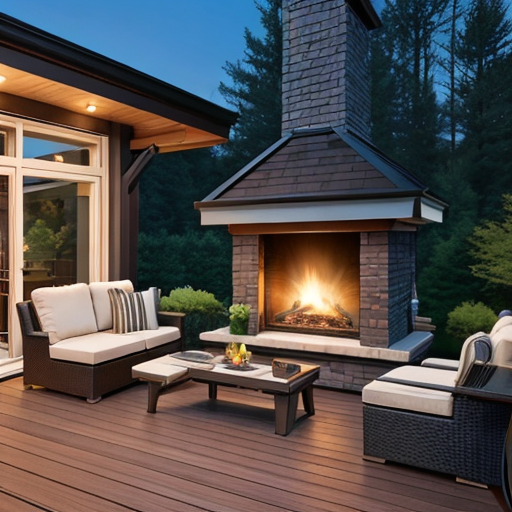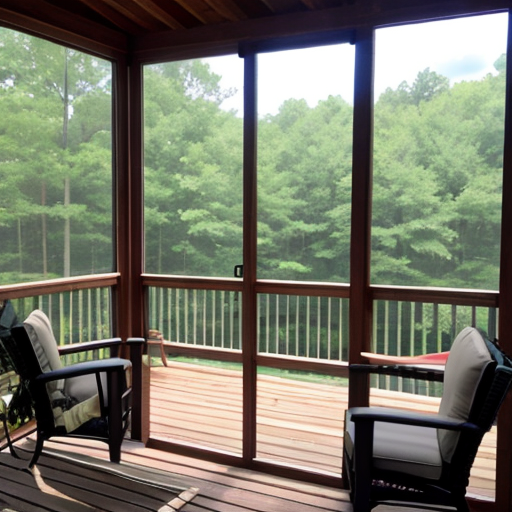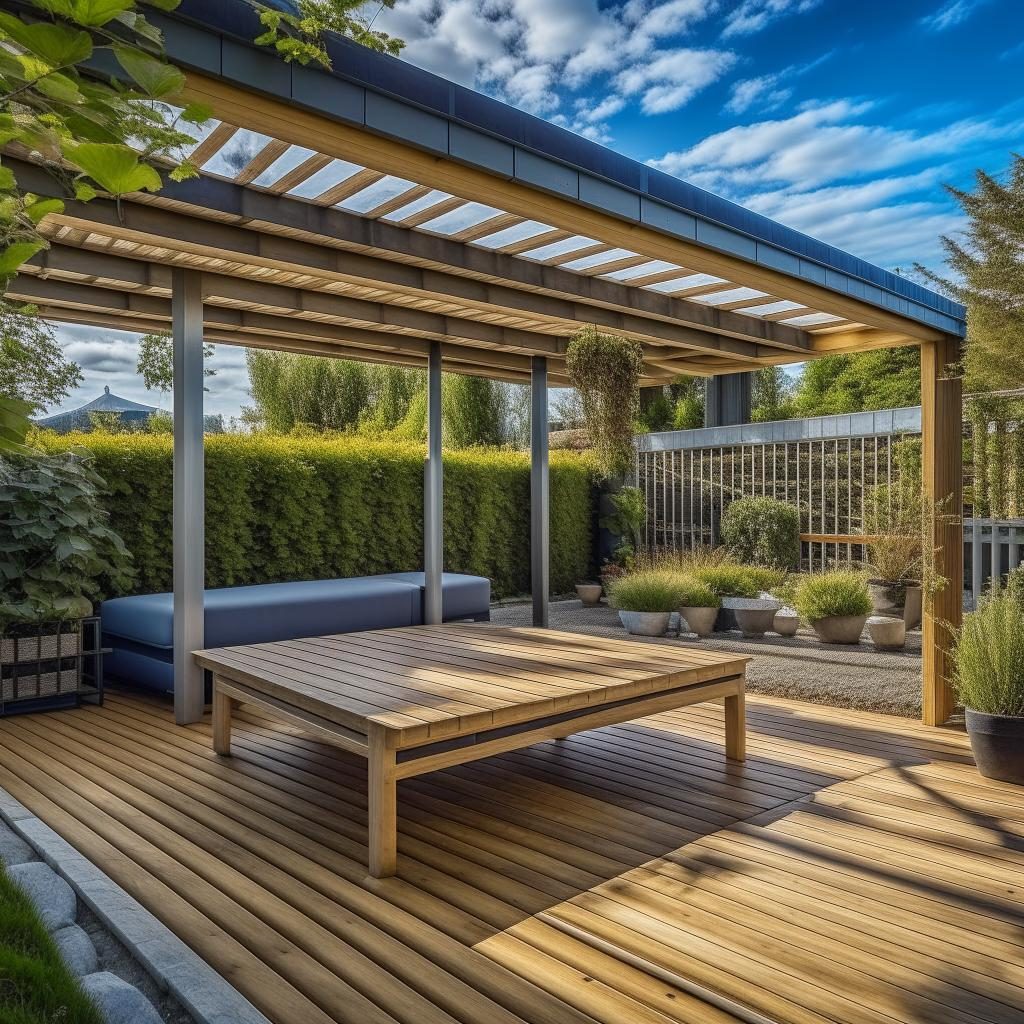Why Composite Decking?
Trending Designs and Patterns for Composite Decking
Incorporating Greenery into Your Composite Deck
Functional Add-ons for Your Composite Deck
Safety and Accessibility for Composite Decks
Eco-friendly Aspects of Composite Decking
Cost and Value Proposition of Composite Decking
Introduction
In the heart of the South, Atlanta, Georgia, stands as a testament to both historic charm and modern innovation. One such innovation that has taken the city by storm is composite decking. Offering homeowners a perfect blend of style, durability, and low maintenance, it's no surprise that many Atlantans are making the switch from traditional wood to composite materials for their outdoor spaces. Whether you're nestled in a historic neighborhood or perched in a contemporary urban setting, composite decking offers a versatile solution that can be tailored to fit any home's aesthetic. In this article, we will delve deep into the world of composite decking in Atlanta, highlighting its numerous benefits, trending designs, and practical applications for your outdoor retreat. Join us as we explore the transformative potential of composite decks and how they can elevate your Atlanta home.
Why Composite Decking?
As homeowners continually seek ways to enhance the value, functionality, and aesthetics of their homes, the demand for high-performance materials has surged. Composite decking has emerged as a frontrunner in this quest for the perfect outdoor decking solution, and for a plethora of good reasons.
1. Longevity and Durability
Composite decking is known for its remarkable resistance to the elements. Unlike traditional wood, which can rot, warp, or fade over time, composite materials maintain their color and structural integrity for years, making them a lasting investment.
2. Low Maintenance
While wood decks often require regular sealing, staining, or even sanding, composite decks demand minimal upkeep. A simple wash from time to time is sufficient to keep it looking brand new.
3. Eco-Friendly
Composite decking is often made from recycled materials, making it a more environmentally-friendly option compared to its wood counterparts. It's a choice that not only benefits your home but also the planet.
4. Versatility in Design
With an array of colors, textures, and patterns available, composite decking offers unmatched design flexibility. This allows homeowners in Atlanta to craft spaces that resonate with both their personal style and the architectural nuances of their homes.
Comparative Table: Composite Decking vs. Wood Decking
| Feature | Composite Decking | Wood Decking |
|---|---|---|
| Lifespan | 25-30 years (with minimal degradation) | 10-15 years (subject to wear and potential decay) |
| Maintenance | Occasional cleaning | Regular staining, sealing, and potential sanding |
| Initial Cost | Moderately High | Moderate to Low (depending on wood type) |
| Long-Term Cost | Low (due to reduced maintenance costs) | Can be high (maintenance, repairs, and replacement) |
| Environmental Impact | Eco-friendly (often made from recycled materials) | Consumes more trees, potential chemical treatments |
| Variety in Appearance | Wide range (colors, textures, and patterns) | Limited to wood's natural colors and grains |
| Resistance to Elements | High resistance to moisture, fading, and insect damage | Susceptible to moisture damage, fading, and insects |
As evident from the comparison, composite decking offers a bevy of advantages over traditional wood. It's an ideal choice for homeowners looking to create a beautiful, lasting, and cost-effective outdoor space in the dynamic climate of Atlanta, Georgia.

Trending Designs and Patterns for Composite Decking
Atlanta's eclectic mix of traditional Southern charm and modern urban vibes reflects in its choice of home décor and outdoor design. When it comes to composite decking, homeowners and designers are always in pursuit of the next innovative style. Let's dive into the trending designs and patterns that have caught Atlanta's eye:
1. Variegated Coloring
Variegated or multi-tonal decks are leading the charge. These decks mimic the natural, nuanced tones of hardwood, offering a rich, organic look. Brands often introduce shades that mimic popular woods like mahogany, walnut, or redwood, bringing nature's best into Atlanta's backyards.
2. Herringbone Pattern
The herringbone pattern, characterized by its distinct V-shape, has made a significant mark on composite decking. This intricate design not only amplifies visual interest but also exudes a sense of luxury and attention to detail.
3. Picture Frame Decking
Picture framing involves creating a border around the deck's perimeter, using a contrasting color or the same color but running the boards in a different direction. This design technique highlights the deck area and provides a refined finish, akin to a framed piece of art.
4. Mixed Material Aesthetics
Blending composite decking with other materials, such as metal or glass railings, creates a contemporary, eclectic feel. This fusion of materials can modernize a space while still offering the warmth of traditional decking.
5. Diagonal and Chevron Patterns
Diagonal decking runs the boards at a 45-degree angle to the home, making spaces appear larger and more dynamic. The chevron pattern, similar to herringbone but with boards meeting at points, adds an arrow-like design that guides the eye and establishes flow.
6. Inlays and Borders
Inlays are often used to create unique central designs or motifs on the deck, setting it apart from standard installations. Borders, similar to picture framing, are used to highlight specific areas or features of the deck.
7. Seamless Transitions
A rising trend is to create decks that offer a seamless transition from the indoor space. Using sliding doors or extended rooflines, homeowners are blending the boundaries between their indoor living space and their outdoor deck oasis.
8. Integrated Lighting
In-built deck lighting, especially LED strips along railings or stair treads, not only ensures safety but also adds to the evening aesthetics, making the deck a 24/7 usable space.

Incorporating these trending designs into your composite deck will not only enhance the beauty of your outdoor space but also provide a contemporary touch that aligns with Atlanta's evolving architectural landscape. With the right design choices, your deck can become the envy of the neighborhood.
Incorporating Greenery into Your Composite Deck
The fusion of architecture and nature is at the heart of modern home design. In bustling cities like Atlanta, homeowners find solace in pockets of green, making decks more than just extensions of their homes but also sanctuaries for relaxation and reflection. Incorporating greenery into your composite deck can breathe life into the space, creating an oasis of tranquility. Here's how to do it seamlessly:
1. Planters and Pots
2. Vertical Gardens
For those with limited deck space, vertical gardens are a boon. They allow homeowners to grow a variety of plants without sacrificing floor space. Whether it's herbs, ferns, or colorful annuals, a vertical garden adds depth and dimension.
3. Hanging Planters
Suspended from overhead structures or railings, hanging planters bring a whimsical touch to the deck. They're perfect for trailing plants like string of pearls or ferns that drape gracefully.
4. Trellises and Pergolas
Incorporating climbing plants on trellises or pergolas offers shade and intimacy. Vines like jasmine or wisteria not only provide cover but also infuse the air with delightful fragrances.
5. Grass and Ground Covers
For those with larger deck areas or split-level decks, patches of grass or low-maintenance ground covers can be used to create natural breaks or zones within the deck.
6. Herb Gardens
Herb gardens serve a dual purpose. They offer fresh ingredients for the kitchen and add a pleasant aroma to the deck. Compact and easy to maintain, they can be incorporated into even the smallest of spaces.
7. Water Features with Plant Life
Consider small ponds with aquatic plants or fountain features surrounded by lush greenery. The sound of water combined with the aesthetics of plants creates a serene environment.
8. Native Plants
Using native plants not only supports local ecology but also ensures the plants thrive in Atlanta's climate. Native plants often require less maintenance and are resilient to local pests and diseases.
9. Integrated Bench Planters
Opt for benches with built-in planters. It's a functional design choice that provides seating and houses your favorite plants.
10. Seasonal Plants
Rotate your greenery with the seasons. Incorporate colorful annuals in the spring and summer, and transition to hardy evergreens during the colder months.
Incorporating greenery into your composite deck transforms it into a living space, filled with vibrancy and life. Not only does it provide aesthetic appeal, but it also offers a therapeutic space for relaxation, making your deck a true haven in the heart of Atlanta.
Functional Add-ons for Your Composite Deck
Composite decks are beloved for their durability, aesthetics, and low-maintenance features. But to elevate your outdoor space to the next level in terms of both utility and style, consider adding some functional elements. These additions not only enhance the usability of the space but also increase the overall appeal and value of your property. Here's a look at some popular functional add-ons for composite decks:
1. Built-in Seating
2. Outdoor Kitchens and Bars
For those who love to entertain, an outdoor kitchen or bar is a must. Equipped with a grill, sink, and countertop space, these setups allow for alfresco cooking and dining.
3. Fire Features
4. Lighting Solutions
5. Shade Solutions
6. Privacy Screens
Using lattice, vertical gardens, or even decorative panels, you can create private nooks or shield your deck from neighboring views.
7. Entertainment Centers
Incorporate weather-resistant outdoor TVs or sound systems for movie nights under the stars or to enjoy music while lounging.
8. Hot Tubs and Spas
An ultimate luxury, hot tubs or spas can be seamlessly integrated into composite decks, providing a space for relaxation and rejuvenation.
9. Railings with Function
10. Storage Solutions
Hidden compartments or pull-out drawers can be built into the deck, providing storage space for cushions, toys, or gardening tools.
A composite deck in Atlanta is more than just an outdoor extension of your home; it's a versatile space that can be tailored to fit your lifestyle. By incorporating these functional add-ons, you can create a deck that caters to both your practical needs and design aspirations.
Safety and Accessibility for Composite Decks
When designing and installing a composite deck, especially in bustling cities like Atlanta, ensuring the safety of its users should be a top priority. Additionally, making your deck accessible for everyone, including individuals with disabilities or limited mobility, enhances its overall appeal and functionality. Let’s delve into the crucial aspects of safety and accessibility for composite decks.
1. Non-slip Surfaces
Composite decks are known for their resistance to moisture, but like any other surface, they can become slippery when wet. Consider:
2. Sturdy Railings
3. Gates and Locks
If your deck is elevated or you have a pool area, consider installing self-closing gates with child-proof locks to prevent unsupervised access.
4. Lighting
Effective lighting not only sets the ambiance but also:
5. Step and Stair Safety
6. Accessible Design Features
7. Safe Materials
8. Child and Pet Considerations
Ensuring the safety and accessibility of your composite deck in Atlanta is not just a matter of compliance; it's about creating a space where everyone, regardless of age or ability, can relax and enjoy without concern. By taking these measures, you’re investing in the well-being of your family, friends, and guests.

Eco-friendly Aspects of Composite Decking
In today's age of environmental awareness, the footprint of our home improvement projects has never been more important. For residents of Atlanta and beyond, choosing materials that are both durable and eco-friendly is a significant consideration. Composite decking stands out as a prime choice for those wanting to blend aesthetics, function, and green practices. Here's why:
1. Recycled Materials
2. Reduced Carbon Footprint
3. Low Maintenance
4. Long-term Environmental Impact
5. Preservation of Natural Resources
6. Energy-efficient Production
7. Community Benefits
For Atlantans passionate about sustainable living, composite decking is more than just a home improvement option; it's a statement of environmental responsibility. By opting for composite decking, homeowners can enjoy a beautiful, functional outdoor space knowing they've made a choice that benefits the planet.
Cost and Value Proposition of Composite Decking
When homeowners decide to invest in a decking solution, it's not just the initial cost that's crucial. It's the long-term value that the deck offers, both in terms of durability and maintenance costs. Composite decking, while often more expensive upfront than traditional wood, provides significant long-term benefits that can justify the initial investment. Here's a deeper look into the cost and value proposition of composite decking:
1. Upfront Costs
While the initial costs of composite decking can be higher than that of traditional wood, it's essential to consider the benefits you're receiving for that price: a longer lifespan, minimal maintenance, and eco-friendly properties, to name a few. Moreover, with a wide range of quality and price options available in the market, homeowners can often find a composite solution that fits their budget.
2. Maintenance Costs
Over time, traditional wood decks can incur significant maintenance expenses, including staining, sealing, and potential board replacements due to rot or damage. In contrast, the maintenance cost for composite decks is much lower, often limited to occasional cleaning.
3. Long-term Value
Given its durability and resistance to common decking problems like rot, mold, and insect damage, composite decking often outlasts traditional wood decks. This longevity means homeowners won't face replacement costs for a much longer period.
4. Resale Value
Home improvements can significantly impact a property's resale value. Composite decking, recognized for its long lifespan and reduced maintenance requirements, can be an attractive feature for potential buyers, potentially boosting the property's market value.
Comparison Table: Composite Decking vs. Traditional Wood
| Criteria | Composite Decking | Traditional Wood |
|---|---|---|
| Initial Cost | Higher initial cost | Lower initial cost |
| Maintenance Cost (Annually) | Minimal (occasional cleaning) | High (staining, sealing, repairs) |
| Lifespan | 25-30 years (or more with high-quality materials) | 10-15 years (varies with maintenance) |
| Eco-friendliness | High (recycled materials, low waste) | Moderate (depends on wood source) |
| Resistance to Elements | High resistance to rot, mold, and insects | Varies, treatment often required |
| Resale Value Impact | Positive impact (due to longevity & low maintenance) | Neutral to positive (based on condition & maintenance) |
In conclusion, while the initial cost of composite decking may be a deterrent for some, the long-term benefits - in terms of both monetary savings and convenience - make it a worthy investment. For homeowners in Atlanta and beyond, composite decking provides a balance of aesthetics, durability, and value that's hard to beat.




